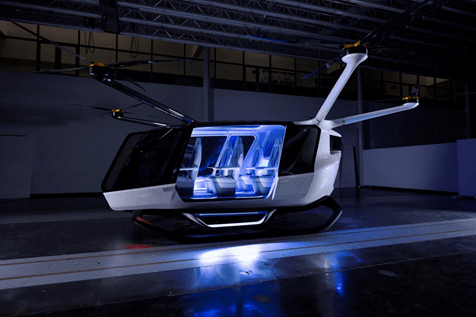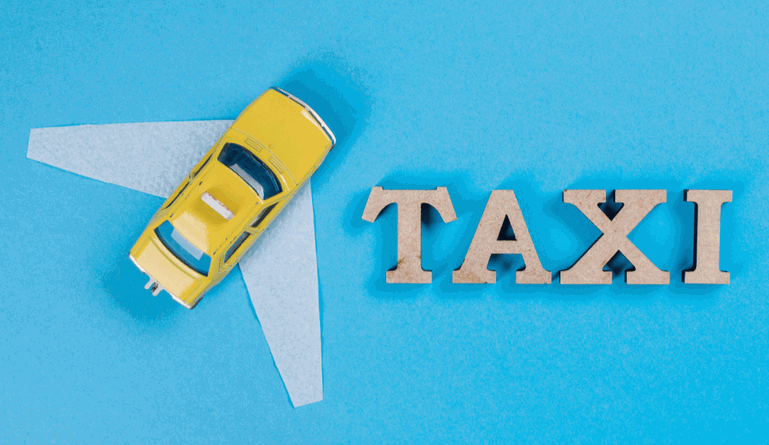Flying taxis are rapidly catching pace as more and more companies are working on developing and testing prototypes. This mode of transportation is being seen as a means to alleviate traffic and pollution in today’s modern urban hubs. But the question remains – is this a sustainable alternative?
Hopkinton, Massachusetts-based startup Alaka’i Technologies unveiled Skai – a flying taxi that will run on hydrogen fuel cells. Reported by the company as the first of its kind, this technology will allow Skai to fly for up to four hours with a 400-mile range. Without an environmental hit or long downtimes, the cab can top up in less than 10 minutes. It will be able to carry up to five people or a maximum payload of 1,000 pounds.

Source: CNET
As shown in the picture, the six-motor design was created with the help of BMW’s Designworks and is structured on a wrap-around canopy that gives passengers a clear view. There are multiple redundant systems (including the fuel cells) and an airframe parachute for safety purposes. While the initial versions of Skai will be piloted manually, automation is definitely in the cards.
Skai’s fuel cells are 95% reusable (the remaining 5% are 99% recyclable). It hasn’t yet been certified by the Federal Aviation Administration, but Alaka’i Co-Founder and CEO Brian Morrison expressed confidence in the company’s executive and engineering team — which hails from NASA, Raytheon, Beech Aircraft, McDonnell Douglas, Hughes, DayJet, SATSAir, Cirrus, Metro Aviation, and Delta Airlines.
“This remarkably impressive team have come together to build on our collective experience to finally realize our singular, critical vision to launch Skai and transform transportation,” Morrison said. “Skai offers practical, real-life solutions to everything from relieving traffic congestion to delivering supplies during natural disasters. Skai is set to offer affordable, realistic applications in the commercial, private, freight, and personal air mobility markets.”
Experts and analysts predict that flying cabs will soon become a reality and that too within the next three years. However, semi or complete automation may take at least 6 years. Analysts at Roland Berger predicted that 3,000 flying taxis will be in operation globally in five years, a number they say will increase to 12,000 by 2030 and to nearly 100,000 by 2050. Meanwhile, Morgan Stanley forecasts that the market for flying taxis will reach $1.5 Trillion by 2040, which is likely why there’s sustained interest from the private sector.
Alaka’i isn’t the only company to have the technology in place. Last week, Garmany based startup Lilium completed the first test of its 5 seater aircraft. Chinese tech giant Ehang announced plans to build a fleet of passenger-carrying quadcopters over the next few years. Google co-founder Larry Page’s Kittyhawk received backing from the New Zealand government for its self-piloting, vertical takeoff and landing air taxi. Volocopter’s 18-propeller passenger drone recently completed test flights over Dubai as it races to beat ride-hailing giant Uber to market with the world’s first drone taxi system. Uber unveiled its flying taxi models last month, while its partner Bell Flight did so in early January. Airbus also ran a flight test for its flying taxi in February.
Many other companies and startups including AeroMobil, Vertical Aerospace, Joby Aviation, Boeing, and many more are all in various stages of development of flying cabs. There are at present more than 100 such electric aircraft worldwide that are still being tested and developed. Looks like we could all soon be hailing flying taxis to commute pretty soon!





